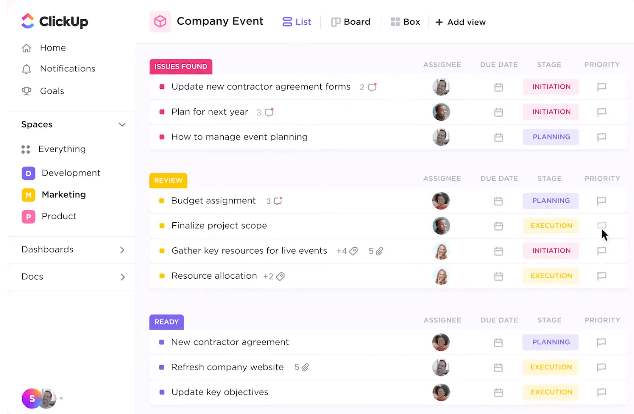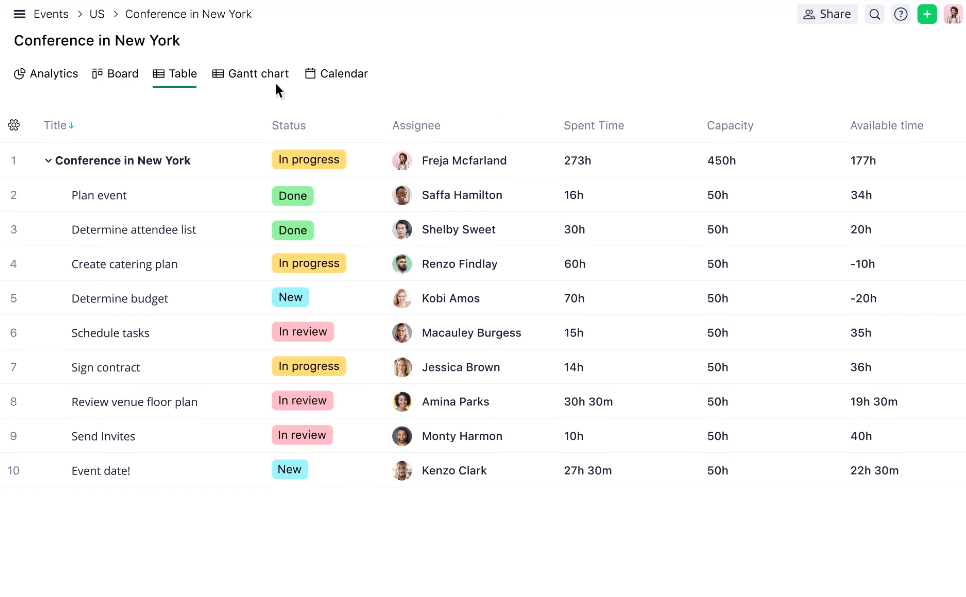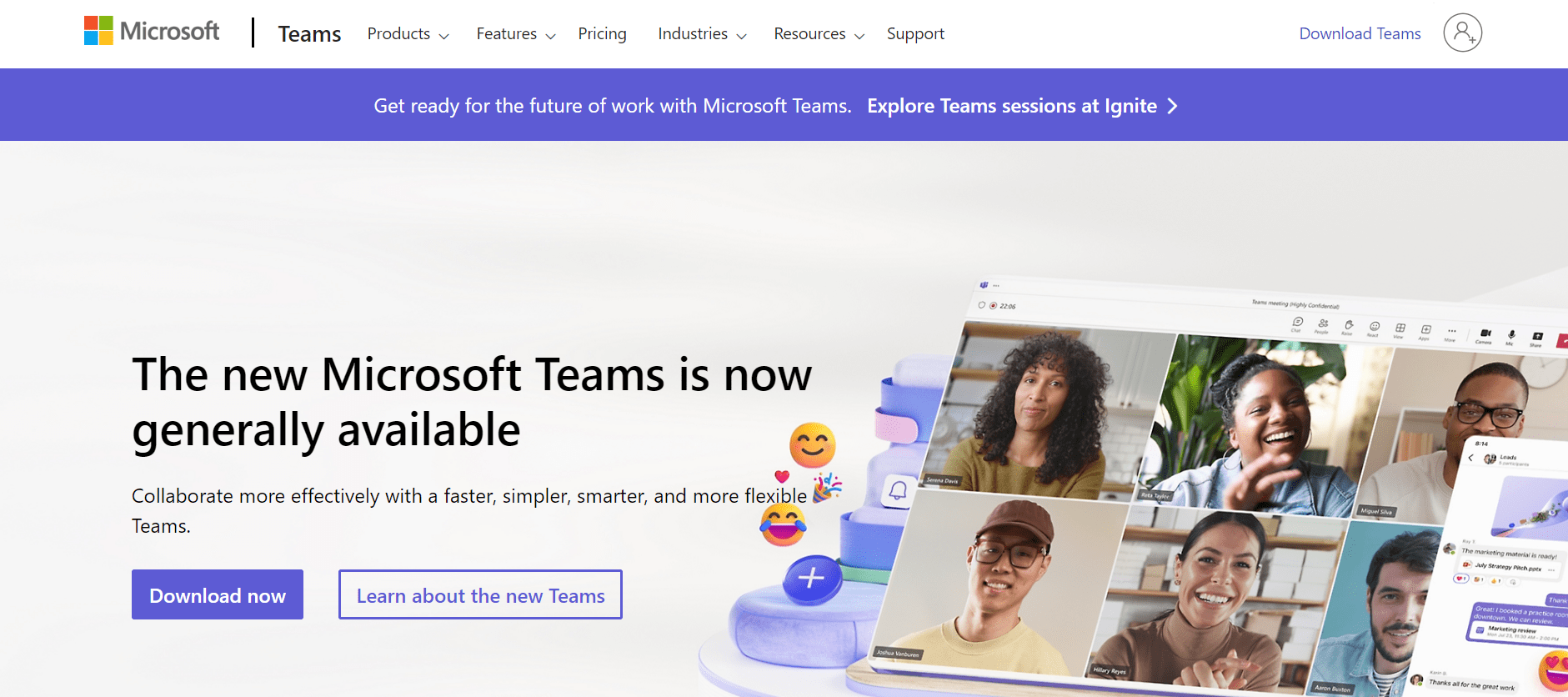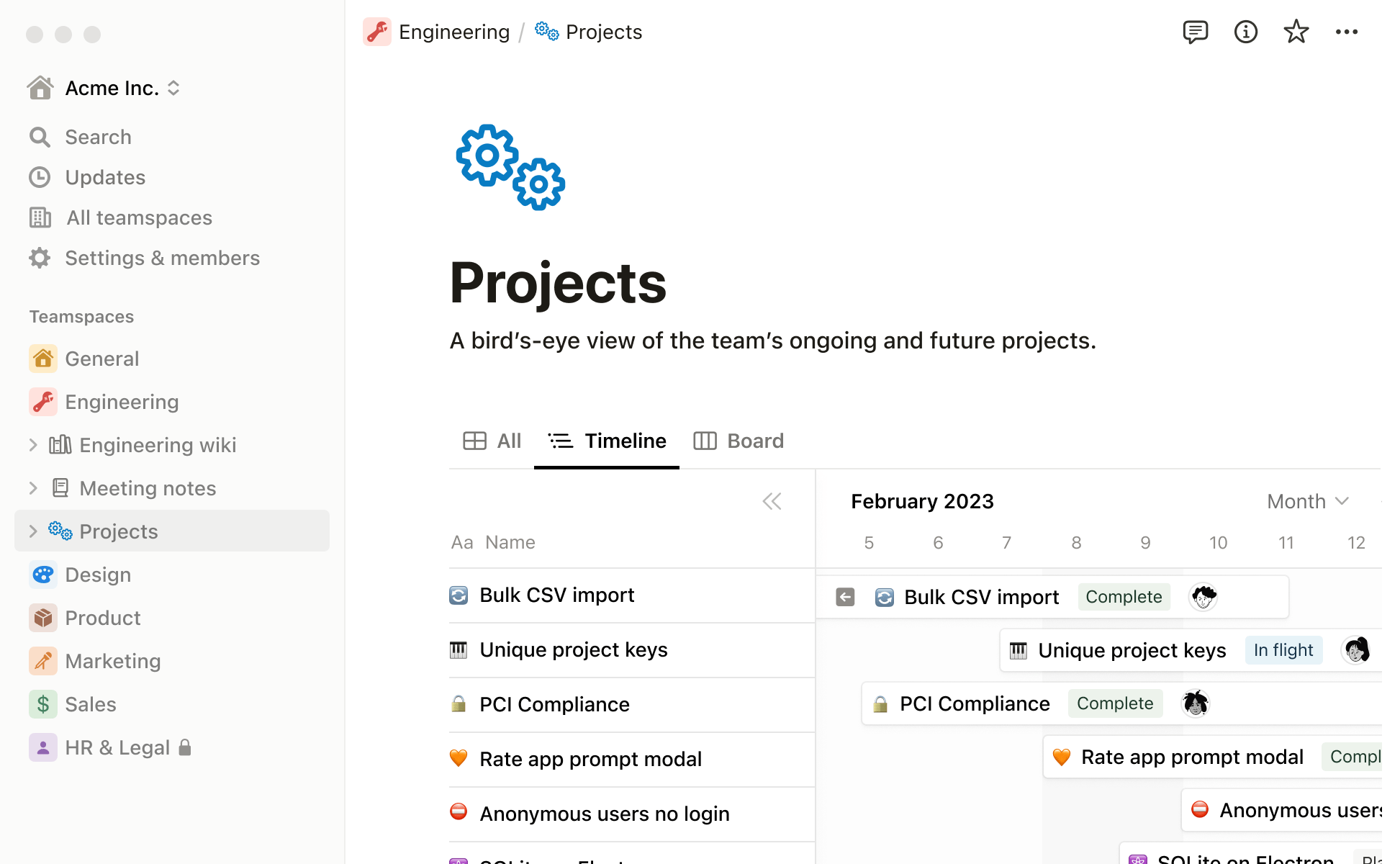Efficient communication and interaction among team members play a crucial role in achieving success across various endeavors.
Collaboration stands as a pivotal element, particularly in business operations. Many projects hinge on the seamless sharing of ideas, suggestions, and real-time meetings among team members. This collaborative effort becomes even more vital in projects involving multiple contributors working towards a common goal.
In today’s era, the deployment of collaboration tools has become instrumental in ensuring effective teamwork among team members, managers, and colleagues. These platforms offer a multitude of benefits, including real-time communication through email or live chat, instant sharing of documents, videos, and audio files, as well as notifications and reminders for alerts, tasks, and deadlines.
But amidst the array of options available, pinpointing the ideal software for your company can be challenging.
To guide your decision-making process, our team of experts has compiled a list of the top 10 collaboration tools that you should consider adopting in 2024!
Table of Content
What are collaboration tools?
Collaboration tools refer to software designed to facilitate communication, project management, and teamwork via the internet. These tools empower team members, regardless of their geographical location, to collaborate in real-time, allowing them to share documents, manage tasks, and conduct meetings.
In today’s dynamic work environments, characterized by global and remote setups, these tools play a vital role in keeping teams connected, aligned, and productive.
They overcome barriers posed by distance and time zones, enabling seamless collaboration. Whether utilized for brainstorming sessions, project monitoring, or day-to-day communication, these tools ensure that collaborative efforts are efficient, effective, and streamlined.
Selection Criteria for the Best Collaboration Tools
I thoroughly evaluated and compared the most popular team collaboration tools in the market, considering both reviews and user interface. My evaluation criteria included several factors that define good project management options within collaboration tools.
Here are the key points of my assessment:
Core Functionality
Collaboration software varies in types and functions. Some tools serve as project management platforms, while others offer virtual whiteboarding solutions or communication-centric features. Each tool on my list is outlined with its core functionality in the overview.
Key Features
Different collaboration tools encompass a range of features:
- Team communication tools: Such as live chat, message boards, voice/video calls, forums, ensuring connectivity.
- File management: Enabling document sharing, storage, real-time collaboration, version control, access permissions, and cloud storage.
- Project management tools: Task management, project planning, to-do lists, timelines, notifications, and agile tools like Kanban boards and Gantt charts.
- Brainstorming features: Including whiteboards, video conferencing, note-taking, mind mapping, etc.
- Workflow management: Outlining business processes, workflow diagramming, and automation of certain processes.
Usability
Ease of use is vital for adoption. I assess the tool’s setup simplicity, an intuitive interface, and user-friendliness, focusing on quick time to value. Additionally, I look for features like templates, mobile apps, and plugins that enhance overall usability.
Integrations
The integration capabilities of collaboration tools with other software are crucial. I checked for compatibility with popular project management and communication tools like Asana, Jira, Trello, Microsoft Teams, Slack, Zoom, among others. Integration with cloud-based storage systems like Google Drive, Box, and Dropbox is also noted, along with time tracking and resource scheduling tools.
Pricing
While not all great software is free, I provide insights into the pricing of these tools. The range starts from $3 to $50 per user per month, depending on the features.
Many collaboration tools offer free plans suitable for small businesses and startups. Pricing details for each tool can be found in this article.
Types of collaboration tools
Here’s a summary of the main categories of collaboration tools:
1. Whiteboards
Digital iterations of traditional whiteboards enable teams to brainstorm and ideate virtually. They replicate the feel of physical brainstorming sessions and are often combined with video conferencing to enhance the collaborative experience.
2. Project Management Tools
These tools centralize task management, timelines, and project planning, allowing for efficient project organization. They facilitate project planning, task assignment, and provide comprehensive context for completing tasks.
3. Calendars
Cloud-based calendars simplify synchronization efforts across teams. They automate time zone adjustments, send meeting reminders, and allow team members to view each other’s availability easily.
4. Instant Messaging
Platforms for instant messaging foster communication and collaboration among teams across different time zones. They enable quick exchanges, informal conversations, and real-time discussions, supporting workplace connections and friendships.
5. File-Sharing Tools
These platforms offer centralized, secure access to documents and data, eliminating the need for file-sharing via emails. They provide organized access and often feature customizable options for data organization and access control.
6. Video Conferencing Tools
Video conferencing platforms facilitate real-time discussions and collaboration among teams in virtual meeting rooms. They typically include chat features, screen-sharing capabilities, and sometimes entertaining features like filters or background replacements.
Our top picks for 2024
Here are some top choices and what makes them an excellent choice for team players:
1. Monday.com
Monday.com is a highly popular collaboration platform known for its efficiency in streamlining various processes, enabling teams to produce high-quality output in less time.

Image by Monday.com
Its user-friendly controls and interface simplify data comprehension and report analysis, allowing both team members and managers to gain insights into project progress. Real-time monitoring and tracking of member activities enhance task and project collaboration efficiency.
The platform’s advanced capabilities cater to teams of all sizes and types. Whether traditional hierarchical structures or modern collaborative setups, tasks and projects can be easily assigned, and member roles defined. It offers customizable responsibilities, permissions, and access levels across different operational areas.
The Work OS is designed with a strong focus on teamwork evident in every aspect of its application. Members can comment on tasks and projects, ensuring contextualized communication, keeping everyone informed.
Additionally, it integrates seamlessly with various communication tools like Slack, GitHub, and others, allowing for discussions and collaborations
Customer Ratings
Pricing
- Free: $0 and free forever
- Basic: From $8 per user/ month
- Standard: From $10 per user/ month
- Pro: From $16 per user/ month
- Enterprise: Contact Sales for a customized quote
2. ClickUp
ClickUp serves as the centralized work hub designed to align with the way modern teams prefer to collaborate. By providing context, clear priorities, and enhanced visibility, ClickUp enables teams to amplify collaboration and productivity while optimizing their focus on critical tasks.

Image by ClickUp
ClickUp’s adaptable Workspace fosters an environment where teams can dismantle barriers, share information seamlessly, and swiftly grasp the status of every task and project.
With ClickUp, teams can access a wide array of over 100+ unique work tools, either as replacements for disconnected apps or as integrated solutions alongside existing tools.
Moreover, ClickUp offers seamless collaboration features, facilitating improved teamwork across various work processes, spanning from initial ideas to their execution.
Customer Ratings
Pricing
- Free: $0 and free forever
- Unlimited: From $7 per user/ month
- Business From $12 per user/ month
- Enterprise: Contact Sales for a customized quote
3. Wrike
Wrike stands out as a favored collaboration tool for uniting numerous teams within a single platform. Specifically tailored with features dedicated to Proofing and Approvals, Wrike is an excellent choice for teams involved in content creation.

Image by Wrike
Leverage Wrike to efficiently assign resources to your projects, establish workflow automation, and visualize tasks through personalized dashboards. Its flexibility makes it one of the most adaptable enterprise collaboration software options available.
Notably, the Custom Item Types feature enables users to curate their own content libraries within Wrike, significantly expediting workflow processes.
Customer Ratings
Pricing
- Free: $0 and free forever
- Team: $9.80 per user/ per month
- Business: $24.80 per user/ per month
- Enterprise: Contact Sales for a customized quote
- Pinnacle: Contact Sales for a customized quote
4. Trello
Trello functions as a collaborative tool that relies on visual aids to assist business teams and individuals in planning their tasks and projects.

Image by Trello
Although it’s commonly used by agile software development teams, its user-friendly interface, element of enjoyment, and accessibility for non-developers have made it highly popular across various sectors.
One of Trello’s standout features is its straightforward approach to planning and collaboration. Users can easily list, schedule, and assign tasks using its drag-and-drop functionality. Its intuitive interface doesn’t require extensive technical skills, making it accessible to a wide range of users. The vendor provides a comprehensive free trial to familiarize users with its features.
However, Trello does lack some conventional project management tools such as Gantt charts, time-tracking components, or reporting tools. While Trello is engaging and user-friendly, it may not serve as an all-encompassing solution for every project. Its strength lies in handling short and quick assignments rather than tasks spanning days or projects lasting months.
Customer Ratings
Pricing
- Free: $0 and free forever
- Standard: Starting at $5/user/month
- Premium: Starting at $10/user/month
- Enterprise: Contact Sales for a customized quote
5. Jira
Jira is a system designed to provide business teams with a means to plan, delegate, and prioritize tasks efficiently. It serves as an ideal solution for project development, spanning from conceptualizing ideas to product or service launches.

Image by Jira
With its intelligent yet simple interface, collaboration becomes seamless, contributing significantly to enhanced productivity.
The system is renowned for its robust issue tracking capabilities, allowing team members to communicate about software bugs and identify urgent issues requiring immediate attention. Jira simplifies the creation of dedicated workflows aimed at addressing common issues and ensuring software quality is rigorously tested at crucial stages. The vendor offers a comprehensive free trial to help users familiarize themselves with the platform’s features.
Jira’s versatility allows for extensive configuration, expanding its capabilities through a vast marketplace of integrations and over a thousand add-on modules, many of which are free. These extensions cover functionalities like budgeting, project portfolio management, and reporting. It can be deployed as both a web-based subscription and an on-premise application.
Customer Ratings
Pricing
- Free: For up to 10 users
- Standard: From $7.75 per user/mo
- Premium: From $15.25 per user/mo
- Enterprise: Contact Sales for a customized quote
6. Asana
Asana is an incredibly flexible, primarily web-based collaboration software system equipped with an extensive array of project management features. While its forte lies in workflow management, Asana also serves as a platform for seamless and productive collaboration among team members.

Image by Asana
The free edition alone offers a wealth of benefits, allowing up to 15 users to leverage the system’s core features. These include basic yet highly customizable dashboards, the ability to set due dates, and upload attachments.
Free users can also enjoy unlimited tasks, projects, and conversations. While integrations are available, they may come at a cost. The free version offers integrations with platforms like Slack, HipChat, Google Drive, GitHub, and Dropbox.
The paid packages offer more advanced tools and functionalities. These encompass support for private teams and projects, unlimited guest access, limitless dashboards, data export capabilities, centralized administration tools, and personalized support.
Customer Ratings
Pricing
- Free: $0 and free forever
- Premium: Starting at $10.99/user/month
- Business: Starting at $24.99/user/month
- Enterprise: Contact Sales for a customized quote
7. Google Workspace
Formerly known as G Suite, Google Workspace offers a wide array of features. To begin, there’s Meet, a video-conferencing solution perfect for maintaining communication among colleagues, particularly in remote work setups.

Image by Google Workspace
Additionally, it provides Google Chat for messaging, Google Drive for file sharing, Google Sheets for spreadsheets, and a shared calendar tool to manage schedules.
Google Docs is also a valuable feature, enabling collaborative document creation and editing, along with real-time updates and options for comments and suggestions among colleagues. In fact, this blog was written and edited in Google Docs! And of course, there’s Gmail, the world’s largest email provider, boasting over 1.5 billion active users.
Despite its numerous advantages, Google Workspace does have a few limitations, such as its restricted offline functionality and occasional compatibility issues with Microsoft Office formats.
Customer Ratings
Pricing
- Business Starter: Starting at $6 /user/month, billed annually
- Business Standard: Starting at $12 /user/month, billed annually
- Business Plus: Starting at $18 /user/month, billed annually
- Enterprise: Contact Sales for a customized quote
8. Microsoft Teams
Microsoft Teams offers a comprehensive range of features, including video conferencing, phone calls, text chat, and group messaging. During meetings, participants can share their screens, enhancing engagement and collaboration.

Image by Microsoft Teams
Document collaboration is also seamless; once a document is uploaded and shared, it becomes accessible to every team member. Additionally, meetings can be recorded, enabling absent attendees to catch up on missed content.
For beginners, Microsoft Teams may present a learning curve due to its diverse array of features. One distinctive aspect that sets Teams apart from its competitors is its integration within the broader Microsoft 365 suite of apps and services.
For example, Teams seamlessly integrates with OneDrive and SharePoint, simplifying file sharing. However, users need a Microsoft 365 subscription for full access to all functionalities.
Customer Ratings
Pricing
- Essentials: From $4.00 per user/month
- Business Basic: From $6.00 per user/month
- Business Standard: From $12.50 per user/month
9. Slack
Slack is available on both mobile and desktop devices, offering features for sending direct messages (DMs) and sharing files among individuals or groups of employees.

Image by Slack
To streamline conversations, Slack categorizes discussions into distinct channels designed for specific projects, technical support, or general chat. These channels contribute to organizing and maintaining coherence in a team’s workflow.
The platform also supports video calling, allowing colleagues to engage in project discussions. While this feature might be overwhelming for larger teams, it can be extremely beneficial for smaller teams.
While Slack doesn’t substitute dedicated cloud storage services, it simplifies file sharing through a convenient drag-and-drop function. Despite its limited storage capacity, Slack integrates with services like Google Drive and Dropbox, enabling users to access and share files seamlessly from various sources within the Slack interface.
Customer Ratings
Pricing
- Free: $0 per month
- Pro: Starting at $8.75 per user/month
- Business: Starting at $15 per user/month
- Enterprise: Contact Sales for a customized quote
10. Notion
Notion integrates various everyday work tools into a unified platform, offering features like product roadmaps, document collaboration, and meeting note-taking. Additionally, its AI features are beneficial for brainstorming, text refinement, summarizing complex notes, and automating repetitive tasks.

Image by Notion
Designed specifically as a workspace for teams or entire companies, Notion allows customization of tools according to specific needs and workflows.
It supports database management, wikis, documents, and notes creation, providing versatile views such as tables, lists, calendars, kanban boards, galleries, and timelines for improved data visualization and aesthetics.
While mastering Notion’s full potential may involve a learning curve, the tool offers various templates and accessibility across web, desktop, and mobile apps to ease the process.
Although it lacks advanced project management features, Notion provides user-friendly functionalities, including a drag-and-drop workflow builder empowering users to personalize their workspace.
Customer Ratings
Pricing
- Free: $0 per month
- Plus: $8 per user/month
- Business: $15 per user/month
- Enterprise: Contact sales for a customized quote.
Final Verdict – Choosing the Right Collaboration Tool for 2024
There is a multitude of online collaboration tools available for nearly any task within the business environment. Moreover, your team doesn’t need to be geographically dispersed to benefit from these tools. Even in-house teams can significantly enhance project execution, resource optimization, and achieve remarkable collaboration by leveraging these tools, ensuring higher transparency.
If you aim to enhance efficiency and effectiveness within your business, it’s high time to contemplate and adopt these tools in 2024.
FAQs
What are the types of collaboration tools?
Collaboration software varies in forms. For instance, you might be familiar with Slack, a prevalent online collaboration tool focused on group instant messaging. Slack, Google collaboration tools (Drive, Google Docs, Sheets, Hangouts), and possibly Microsoft collaboration tools (SharePoint, One Drive) are part of collaboration-specific tools.
Today, elements of these tools or the tools themselves can be found within numerous online project management tools. Additionally, there are emerging technologies and new types of collaboration platforms consistently entering the market.
Collaboration software can differ significantly based on the team you work with. Customer support teams might rely on their CRM software for collaboration, while design teams might use sticky notes within their UX tools. It’s essentially about discovering tools that complement your team’s specific work.
What are the benefits of collaboration software?
Centralizing all project communication, files, and progress in one place promotes clearer information exchange, helping avoid miscommunication pitfalls. If you’ve ever sent an outdated version of a shared document to a client, you’ll understand the significance of collaboration.
However, the advantages of collaboration tools extend beyond improved communication. When everything is accessible from one platform, processes become more efficient, offering a more precise overview of project progress. Utilizing collaboration and productivity software keeps teams aligned and operating at a high level.
Can collaboration tools improve remote work?
Absolutely! In the present day, remote teams operate across various geographies and time zones, missing out on the organic interactions and information exchange typical in physical office settings. Collaboration tools bridge these gaps by connecting remote employees, encouraging conversations, and increasing interaction opportunities among them.
Here are ways in which a collaboration tool can aid remote workers:
- Reducing isolation: Offering multiple communication channels like instant messaging, video conferencing, and project-specific discussions.
- Enabling real-time collaboration: Allowing remote workers to collaborate on the same document or project plan, facilitating quicker decision-making and more efficient teamwork.
- Improving sense of belonging: Assisting remote workers in understanding their tasks, others’ tasks, and their interconnection, fostering a sense of team membership and highlighting the impact of their work on others around them.
For Further Reading:
- Top 10 CRM Applications to Use in 2024
- Top 10 Issue Management Applications to Use in 2024
- Top 10 Gantt Charts to Use in 2024
- Top 10 Kanban Boards to Use in 2024
- Top 10 Meeting Management Applications to Use in 2024
- Top 10 Risk Management Applications to Use in 2024
- Top 10 Team Management Applications to Use in 2024
- Top 10 Note Taking Applications to Use in 2024
- Top 10 Task Management Applications to Use in 2024
- 10 Best Productivity Apps to GTD in 2024
- 10 Best Project Management Applications to Use in 2024

